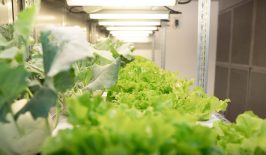With Holi just around the corner, we take a look at some sustainable ways to enjoy the festival of colour.
Holi is a time for celebration, for setting the landscape awash with colour and for ushering in seasonal change. It’s fairly safe to say that most of us, quite frankly, would pass on skin irritations and polluted waterways as flow on effects from all this festivity. Yet doing so can be a hard task with the prevalence oxidised metals or industrial dyes mixed with engine oil found in a number of Holi colours sold at markets. These materials can be harmful to skin and eyes and can get absorbed into waterways when washing clothes stained with these colours.
SOS: Save Our Skin (and Eyes)!
A number of the synthetic colours often sold on the street can cause detrimental effects to human health, particularly when in contact with skin or eyes. Synthetic ingredients, such as chromium, silica, lead and alkaline materials, are used to cost-effectively achieve the intense, bright hue of these colours as well as make them longlasting.
Doctors in Pune last year issued a health warning to city residents just before Holi, advising them to wear goggles and cover skin and hair with a thin layer of oil so that colours could be easily washed off later. To give you an idea of the toxicity of these ingredients, some of the them, such as Rhodamine B (pink), are used as chemical pesticides. Mercuric oxide (red), another common pesticide ingredient, has been banned for use by the European Union, citing toxicity levels. Common side-effects from coming into contact with these materials include skin irritations, eye infections (including corneal abrasions) and respiratory infections.
These chemicals can also enter waterways once clothes stained with the colours are washed. Lead (commonly used to create black for Holi) can have a negative effect on biodiversity, building up in waterways and resulting in lead poisoning of soil organismslocated around said bodies of water.
DIY dye
There are a number of non-toxic, at-home ingredients that can be used to create colours for Holi. Haldi (turmeric) can be mixed chick pea flour to create yellow, dried beetroot or red sandalwood powder can be mixed with water for a deep red or magenta, green can be achieved using mehendi henna powder or leaves of a wheat plant while flowers like Jacaranda and Hibiscus can be dried in the sun and then crushed to become a brilliant blue powder (About.com and Holi Festival have a wealth of ingredient and recipe suggestions for creating non-toxic Holi colours).
There are also a number of non-toxic Holi colours available commercially. Hyderabad Goes Green has set up an online shop specifically offering these products. Mumbai-based Classic Enterprises offers the Kwality Colours brand featuring a range of non-toxic, skin-friendly colours.
Commercially-produced, non-toxic colours tend to retail for a higher price than synthetic versions which can be a huge deciding factor for people when deciding which to purchase. Getting creative and looking at how you can produce non-toxic Holi colours using ingredients you already have at home helps circumvent the issue of cost as well as significantly minimising the harm to people’s health and the environment. Check holifestival.org for a very detailed breakdown of ways to celebrate Holi sustainably and healthily.








